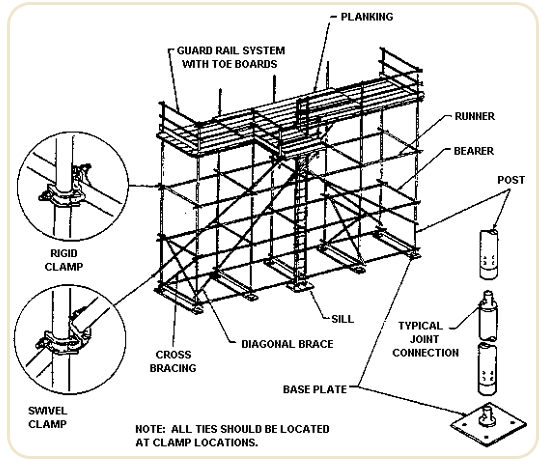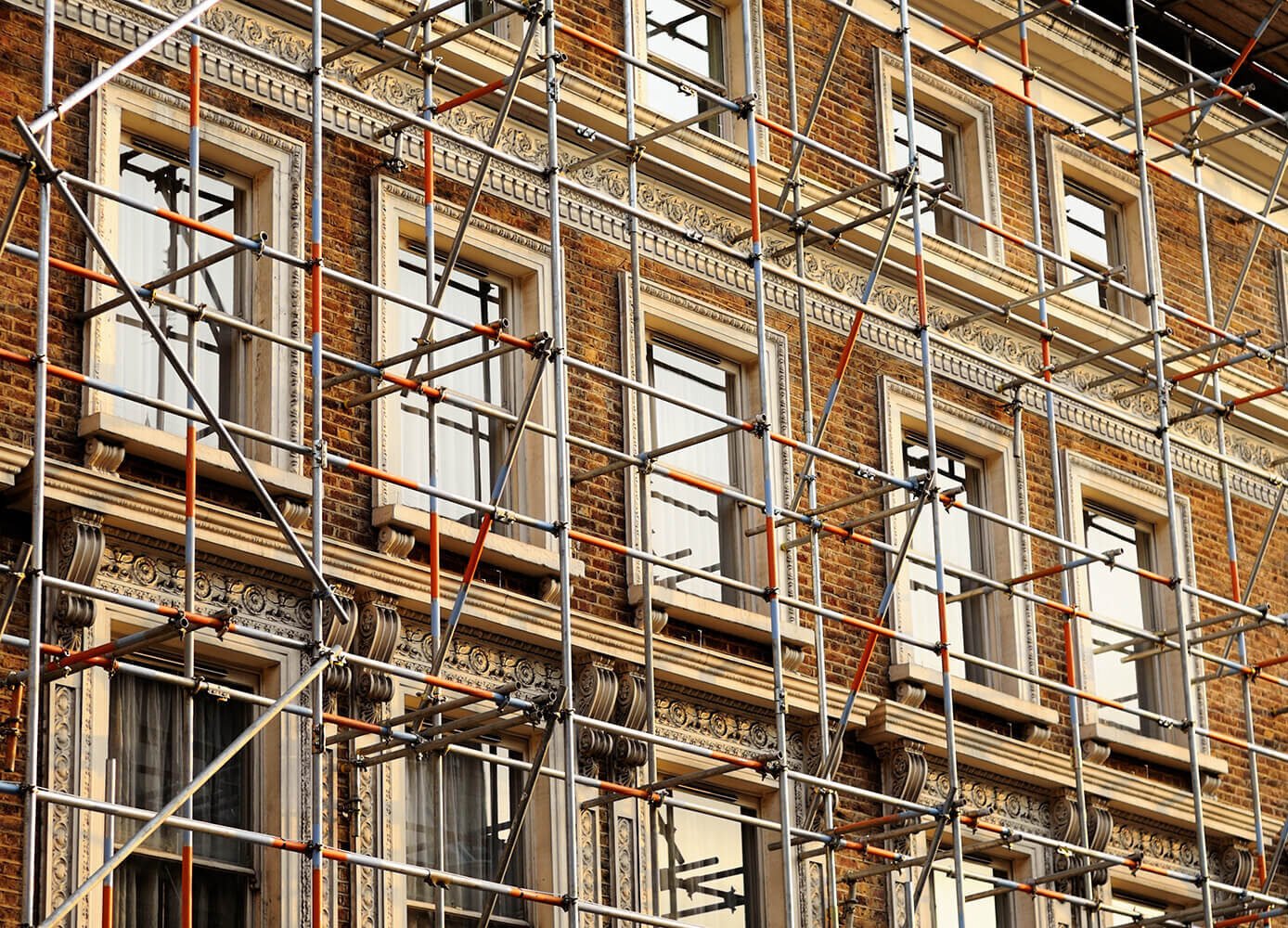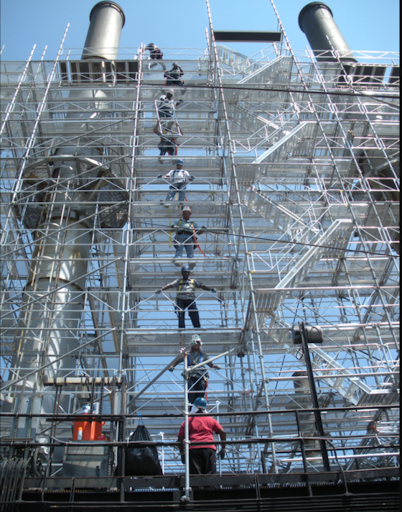Find Reliable Scaffolding Services in Surrey for Your Project Needs
Find Reliable Scaffolding Services in Surrey for Your Project Needs
Blog Article
Discovering the Numerous Sorts Of Scaffolding Utilized in Building And Construction Jobs
The building and construction industry counts heavily on different kinds of scaffolding to fulfill details project needs, each offering distinctive advantages and applications. Standard framework scaffolding provides a durable foundation for general jobs, while put on hold scaffolding is vital for service skyscraper frameworks. Various other choices, such as system and rolling scaffolding, deal with effectiveness and mobility, respectively. Moreover, the cantilever variant verifies very useful in urban atmospheres where area is constrained. Understanding the nuances of these scaffolding types is essential for maximizing security and efficiency on building websites, motivating a better assessment of their unique features and applications.

Traditional Frame Scaffolding
Typical frame scaffolding is one of one of the most commonly made use of techniques in the building industry as a result of its effectiveness and versatility. This system includes vertical and horizontal frameworks that are constructed to develop a secure system for workers and products. The main parts consist of upright blog posts, horizontal ledgers, and diagonal braces, which together supply a strong structure that can support substantial loads.
Among the vital advantages of standard frame scaffolding is its flexibility to different building tasks, varying from property buildings to huge commercial frameworks. The modular layout enables very easy assembly and disassembly, making it effective for both lasting and short-term tasks. In addition, the system can be personalized in height and size, suiting different building layouts and website conditions.
Security is extremely important in scaffolding applications, and traditional frame systems are furnished with guardrails and toe boards to avoid falls and make sure worker defense. Additionally, routine inspections and adherence to security policies are vital in keeping the stability of the scaffold. Overall, typical frame scaffolding continues to be a fundamental choice in the building and construction sector, offering a reliable platform for labor and enhancing overall project performance

Suspended Scaffolding
Suspended scaffolding supplies an one-of-a-kind option for building projects that require accessibility to raised surface areas, specifically in situations where traditional framework scaffolding might be impractical. This kind of scaffolding is commonly suspended from the roofing or upper degrees of a framework, utilizing a system of ropes, pulleys, and platforms to create a working room that can be gotten used to various heights.
One of the main benefits of suspended scaffolding is its versatility. It can be quickly rearranged or lowered to fit adjustments in building needs, making it perfect for tasks such as home window installment, façade work, and upkeep on skyscraper structures. Furthermore, the marginal footprint of put on hold scaffolding enables for much better usage of ground room in city environments, where space is usually limited.
Safety and security is a crucial consideration in the use of suspended scaffolding. On the whole, put on hold scaffolding offers a reliable and effective service for accessing hard-to-reach locations in different building scenarios, improving both efficiency important site and safety on site.
System Scaffolding
System scaffolding, often considered a contemporary solution in the scaffolding industry, contains pre-engineered components that can be quickly set up and adapted for numerous construction jobs. Scaffolding. This kind of scaffolding is identified by its modular style, which permits versatility and efficiency on work websites, fitting structural demands and various heights
Usually made from high-strength steel or aluminum, system scaffolding supplies enhanced resilience and stability. The elements consist of upright blog posts, straight journals, and angled dental braces, which adjoin safely, making certain a robust structure. The style commonly integrates standardized fittings, simplifying setting up and disassembly procedures, thereby reducing labor time and prices.

Rolling Scaffolding
Moving scaffolding is a flexible choice to traditional fixed scaffolding, created for wheelchair and convenience of use on building and construction websites. This kind of scaffolding contains a platform supported by frameworks with wheels, permitting workers to conveniently move it as needed. The flexibility feature substantially enhances productivity, as it decreases downtime related to setting up and taking apart fixed scaffolding.
Normally constructed from light-weight materials such as aluminum or steel, rolling scaffolding uses a tough yet mobile remedy for projects calling for constant repositioning - Scaffolding. It is particularly helpful in tasks such as paint, drywall installation, and electrical job, where access to various elevations and locations is needed
Safety is critical in northwest scaffold service rolling scaffolding layout, with functions such as locking wheels to avoid unplanned movement when being used, and guardrails to safeguard employees from falls. In addition, many versions are adjustable in elevation, accommodating numerous task requirements.
Cantilever Scaffolding

The layout of cantilever scaffolding commonly includes utilizing braces or arms secured to a structure or structure, allowing the platform to prolong exterior securely. Safety is vital; therefore, these scaffolds have to be engineered to stand up to environmental problems and different loads. Normal inspection and upkeep are necessary to ensure structural honesty and worker safety and security.
Cantilever scaffolding is favored for its adaptability and efficient use room, making it a popular choice in city atmospheres where room restraints are usual. It assists in less complicated accessibility to high elevations, superior scaffold service inevitably contributing to the general effectiveness of building jobs. Similar to all scaffolding kinds, proper training and adherence to safety standards are critical for workers using cantilever scaffolding.
Conclusion
In conclusion, the diverse kinds of scaffolding made use of in construction jobs each serve distinctive purposes tailored to specific website needs. Conventional structure scaffolding gives stability, while put on hold scaffolding supplies versatility for raised jobs. System scaffolding facilitates fast assembly, and rolling scaffolding boosts wheelchair for varying job environments. Cantilever scaffolding effectively deals with obstacles in city setups. Recognizing these scaffolding types is necessary for enhancing safety and performance in construction, inevitably adding to the effective conclusion of tasks.
Conventional frame scaffolding supplies a sturdy structure for basic tasks, while suspended scaffolding is vital for job on high-rise structures.Rolling scaffolding is a flexible choice to standard set scaffolding, developed for flexibility and convenience of use on building websites. As with all scaffolding types, correct training and adherence to security criteria are important for workers making use of cantilever scaffolding.
Traditional framework scaffolding supplies security, while suspended scaffolding supplies flexibility for elevated tasks. System scaffolding promotes fast assembly, and rolling scaffolding boosts wheelchair for differing work settings.
Report this page